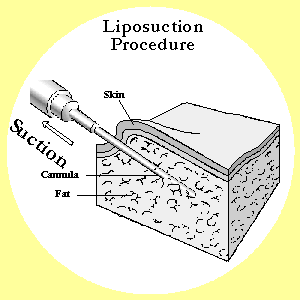Liposuction surgery
If you want information on Liposuction surgery and exactly what it is, then read through our article below.
Liposuction surgery (also called lipoplasty, suction-assisted lipectomy, Tumescent Liposuction or Ultrasound liposuction) is a surgical procedure designed to improve body shape and proportion by removing fat deposits that are resistant to both diet and exercise.
But it comes at a cost and the prices in the UK are steep for the leading clinics.
Liposuction surgery can restore balance to bodies that are physically fit, but out of proportion in a few areas. It is most effective for patients who fall within the normal weight range for age and height. Although no type of liposuction is a substitute for dieting and exercise, liposuction can remove stubborn areas of fat that don't respond to traditional weight loss methods.
Liposuction is currently the most common cosmetic procedure performed by plastic surgeons (use this link for liposuction surgery specialists). In the United States, more than 230,000 such procedures are now performed by board-certified plastic surgeons each year. While the idea of using a blunt hollow cannula attached to suction to remove fat was initially described in the mid-1970s by two Italian dermatologic surgeons, Arpad and Giorgio Fischer, a combination of plastic, dermatologic, and head and neck surgeons helped to popularise this procedure in the United States in the late 1970s and 1980’s.
Liposuction Procedure
Liposuction is a procedure in which localised deposits of fat are removed to re-contour one or more areas of the body. Through a tiny incision, a narrow tube or cannula is inserted and used to vacuum the fat layer that lies deep beneath the skin. The cannula is pushed then pulled through the fat layer, breaking up the fat cells and suctioning them out. The suction action is provided by a vacuum pump or a large syringe, depending on the surgeon's preference. The size of the liposuction cannula can influence the smoothness of the skin after liposuction. The use of large cannulas tend to create irregularities more commonly than microcannulas (outside diameter less than 3 millimetre's). Surgeons who do total-body liposuction tend to use larger cannulas.
Risks Associated With Liposuction
As with any major surgery there is always a risk that something may go wrong. If you are considering liposuction your surgeon should outline all the risks to you before you agree to undertake the surgery.
Too much liposuction (excessive volume of fat removed, or an excessive number of areas treated). Excessive surgical trauma (excessive liposuction) is dangerous and is an important cause for serious liposuction complications. Prolonged exposure to anaesthesia is dangerous and is an important cause for serious liposuction complications. Sometimes the results from liposuction are down to the surgeon's skill. Disfiguring skin irregularities and depressions are frequently the result of the surgeon's inattention to detail.
|

